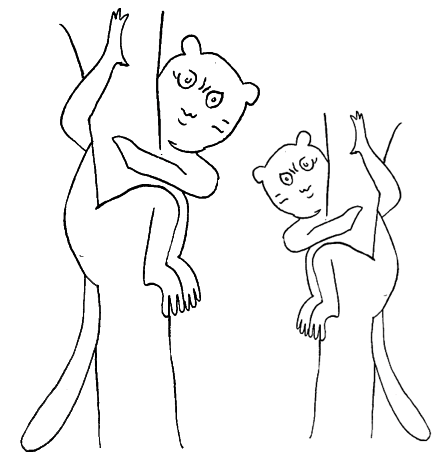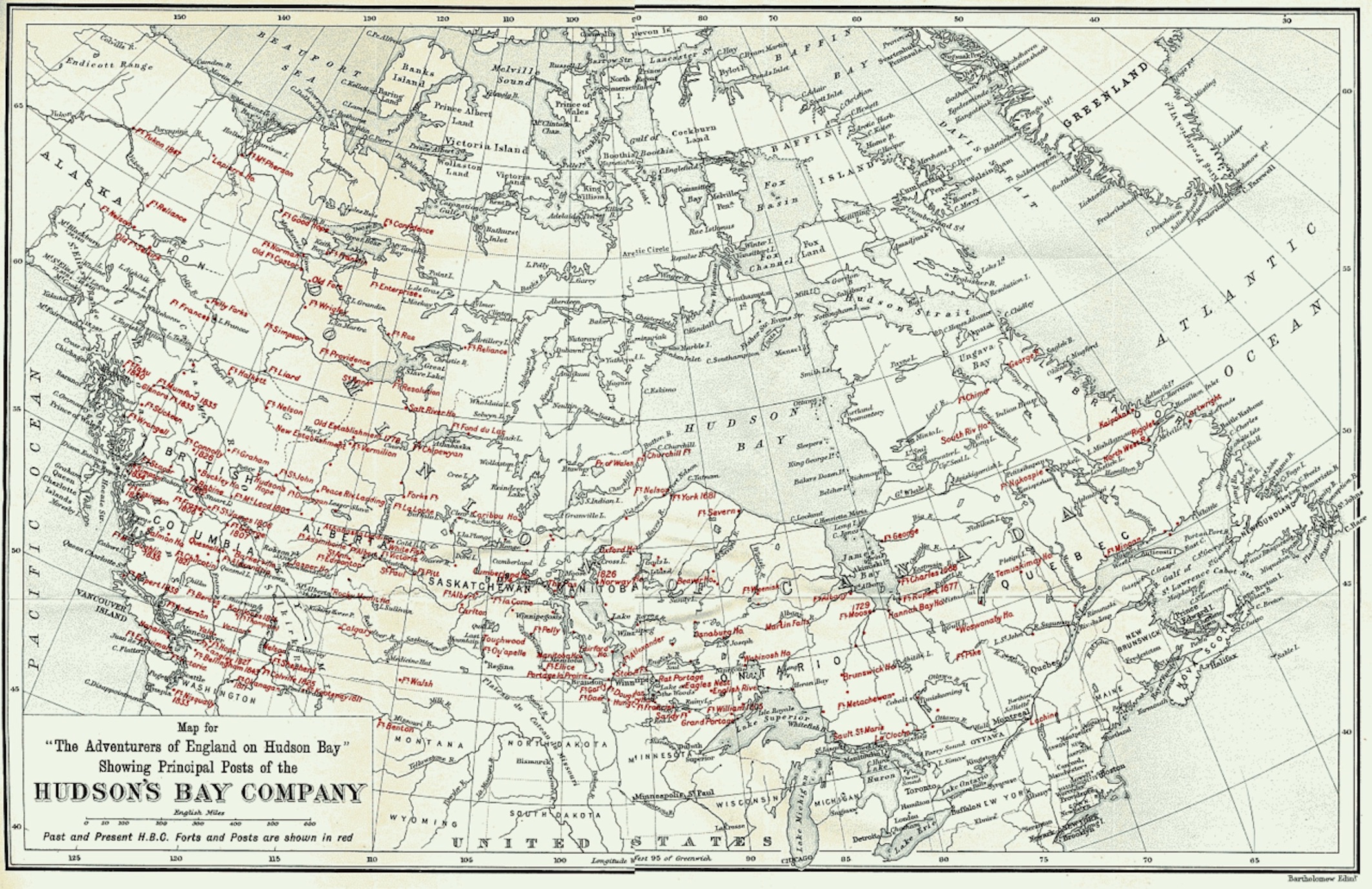
生態学的帝国主義
Ecological imperialism

☆生
態学的帝国主義とは、アルフレッド・クロスビーによって導入された説明概念であり、ヨーロッパ人入植者の成功における、動物、植物、病原体などのヨーロッ
パ生物種の貢献を指摘するものである。クロスビーは『生態学的帝国主義』を著した: The Biological Expansion of
Europe,
900-1900』を1986年に出版した。彼はヨーロッパ人によって植民地化され、征服された場所を「ネオ・ヨーロッパ」という言葉で表現している。
| Ecological imperialism
is an explanatory concept, introduced by Alfred Crosby,[1] that points
out the contribution of European biological species such as animals,
plants and pathogens in the success of European colonists. Crosby wrote
Ecological Imperialism: The Biological Expansion of Europe, 900-1900 in
1986. He used the term "Neo-Europes" to describe the places colonized
and conquered by Europeans. |
生態学的帝国主義とは、アルフレッ
ド・クロスビーによって導入された説明概念であり[1]、ヨーロッパ人入植者の成功における、動物、植物、病原体などのヨーロッパ生物種の貢献を指摘する
ものである。クロスビーは『生態学的帝国主義』を著した: The Biological Expansion of Europe,
900-1900』を1986年に出版した。彼はヨーロッパ人によって植民地化され、征服された場所を「ネオ・ヨーロッパ」という言葉で表現している。 |
| Examples for Crosby's concept In 1607, a group of colonists led by Captain John Smith arrived in North America and established the Jamestown colony in Virginia. Though at first it seemed the colonists would not survive the harsh conditions of the New World, ultimately it was the natives who could not survive the diseases of the Old World. "The colonizers brought along plants and animals new to the Americas, some by design and others by accident. Determined to farm in a European manner, the colonists introduced their domesticated livestock—honeybees, pigs, horses, mules, sheep, and cattle—and their domesticated plants, including wheat, barley, rye, oats, grasses, and grapevines. But the colonists also inadvertently carried pathogens, weeds, and rats."[2] The introduction of these foreign species upset the balance of native species and severely hurt the way of life of the native population. The first major smallpox outbreak among natives was between 1616 and 1619 in Massachusetts. Native Americans had never seen a disease like this, and it wiped out entire settlements in nations such as the Abenaki, the Pawtucket, and the Wampanoag. "By wiping out the Indians, smallpox helped the colonists help themselves to land and resources formerly controlled by unfriendly native people. The Europeans could and did colonize virtually unchallenged in some areas." In 1633 there was another devastating epidemic. William Bradford, governor of the Plymouth Colony, observed that: "They lye on their hard matts, ye pox breaking and muttering, and running one into another, their skin cleaving (by reason thereof) to the matts they lye on; when they turn them, a whole side with flea off at once...and they will be all of a gore blood, most fearful to behold. Then being very sore, what with cold and other distempers, they dye like rotten sheep."[3]  The Principal posts of the Hudson Bay Company by 1914 During this time of colonialism, Europe had seen a great increase in the demand for luxury fur, mainly by Western Europeans. Serbia at the time was the main source of luxury fur, but was unable to supply enough, thus leading to an increase in the value of fur, which in turn expanded the fur trade in North America.[4] The fur trade also upset the ecological balance of North America. "Restraint wasn't a hallmark of the fur trade. In 1822, in the north western regions of the country alone, the Hudson's Bay Company stockpiled 1,500 fox skins, a paltry number compared with the 106,000 beaver skins, but too many none the less. The fur traders had miscalculated. As predators, they had failed to adapt to their prey, and their prey, in turn, retaliated with denial. Of course, the red fox didn't render himself extinct. His numbers merely shrank.".[5] The fur trade not only miscalculated the predator-prey ratio, it allowed for the increase spread of smallpox in the Northern regions of the Americas; Thus creating a geographic commercial route for smallpox to travel from urban populated cities to the rural, open, woodland northern country.[6] https://en.wikipedia.org/wiki/Ecological_imperialism +++++++++++++++ Alfred Worcester Crosby Jr. (January 15, 1931 – March 14, 2018) was professor of History, Geography, and American Studies at the University of Texas at Austin, and University of Helsinki. He was the author of books including The Columbian Exchange (1972) and Ecological Imperialism (1986). In these works, he provided biological and geographical explanations for the question why Europeans were able to succeed with relative ease in what he referred to as the "Neo-Europes" of Australasia, North America, and southern South America. America's Forgotten Pandemic (1976) is the first major critical history of the 1918 "Spanish" Flu. Early life Alfred Worcester Crosby Jr. was born to Ruth (née Coleman) and Alfred Worcester Crosby Sr. in Boston, Massachusetts, on January 15, 1931, grew up in Wellesley, Massachusetts, and graduated from Wellesley High School.[1][2] Career In 1952,[1] Crosby graduated from Harvard University, with a degree in history, then entered the U.S. Army in 1952,[3] during the Korean War, later spending (circa) twenty months stationed in the Panama Canal Zone,[4] in Latin America.[1] After being discharged from the U.S. Army in 1955,[1] he obtained a master's degree in teaching from Harvard in 1956, and a doctorate in history from Boston University in 1961.[5] Crosby was an inter-disciplinary researcher who combined the fields of history, geography, biology and medicine.[5] Recognizing the majority of modern-day wealth is located in Europe and the "Neo-Europes", Crosby set out to investigate what historical causes are behind the disparity, investigating the biological factors that contributed to the success of Europeans in their quest to conquer the world. One of the important themes of his work was how epidemics affected the history of mankind. As early as the 1970s, he was able to understand the impact of the 1918 flu pandemic on world history.[5] According to Hal Rothman, a professor of History at the University of Nevada, Las Vegas, Crosby "added biology to the process of human exploration, coming up with explanations for events as diverse as Cortés' conquest of the Aztec Empire and the fall of the Inca empire that made vital use of the physical essence of humanity."[6] In 1972 he created the term "Columbian Exchange" in his book of the same name.[7] The term has become popular among historians and journalists.[8] Other terms coined included 'Neo-Europes'[citation needed] and 'virgin soil epidemic'.[9] Crosby was also interested in the history of science and technology. He wrote several books on this subject, dealing with the history of quantification, of projectile technology, and the history of the use of energy. He said that the study of history also made him a researcher of the future. He was very much interested in how humankind could make the future a better one.[5] He taught at Washington State University, where he was a co-founder of the school's first black studies department,[10] then Yale University, the Alexander Turnbull Library in New Zealand, and twice at the University of Helsinki as a Fulbright Bicentennial Professor, most recently in 1997–98. He was appointed an academician by Finnish president Martti Ahtisaari. He retired from the chair of Professor Emeritus of History, Geography, and American Studies of the University of Texas at Austin, after teaching for 22 years, in 1999.[5][10][11][12][13] https://en.wikipedia.org/wiki/Alfred_W._Crosby |
クロスビーのコンセプトの例 1607年、ジョン・スミス船長に率いられた入植者の一団が北アメリカに到着し、バージニア州にジェームズタウン植民地を設立した。当初、入植者たちは新 世界の過酷な環境を生き延びられないと思われたが、最終的に旧世界の病気に耐えられなかったのは原住民たちだった。「植民者たちは、あるものは意図的に、 またあるものは偶然に、アメリカ大陸にとって新しい動植物を持ち込んだ。ヨーロッパ流の農耕を決意した入植者たちは、家畜であるミツバチ、ブタ、ウマ、ラ バ、ヒツジ、ウシ、そして家畜化した植物である小麦、大麦、ライ麦、オート麦、牧草、ブドウの木を持ち込んだ。しかし、入植者たちは病原菌や雑草、ネズミ なども不注意にも持ち込んでしまった」[2]。これらの外来種の持ち込みは、在来種のバランスを崩し、先住民の生活様式に深刻な打撃を与えた。 先住民の間で初めて天然痘が大流行したのは、1616年から1619年にかけてマサチューセッツ州であった。アメリカ先住民はこのような病気を見たことが なく、アベナキ族、ポータケット族、ワンパノアグ族などの集落を全滅させた。「天然痘はインディアンを絶滅させることで、以前は友好的でなかった先住民が 支配していた土地や資源を植民者たちが手に入れる手助けをした。ヨーロッパ人は、いくつかの地域では事実上無敵のまま植民地化することができた。1633 年にも壊滅的な伝染病が流行した。プリマス植民地の総督ウィリアム・ブラッドフォードは次のように観察した: 「彼らは硬いマットの上に横たわっており、疱瘡は破れ、呟き、互いにぶつかり合い、彼らの皮膚は(そのために)彼らが横たわっているマットに裂ける。そし て、風邪やその他の不調で非常に痛み、腐った羊のように染まる」[3]。  1914年までのハドソン湾会社の主要拠点 この植民地主義の時代、ヨーロッパでは主に西欧人による高級毛皮の需要が非常に高まっていた。当時のセルビアは高級毛皮の主な供給源であったが、十分な供給ができなかったため、毛皮の価値が上昇し、北米での毛皮貿易が拡大した[4]。 毛皮貿易は北米の生態系のバランスも崩した。「毛皮貿易の特徴は自制ではなかった。1822年、ハドソンズ・ベイ社は北西部だけで1,500枚のキツネの 皮を備蓄していた。ビーバーの皮10万6,000枚に比べればわずかな数だが、それにしても多すぎた。毛皮商人たちの誤算だった。捕食者である彼らは獲物 に適応できず、逆に獲物は拒否反応を示したのだ。もちろん、アカギツネが絶滅したわけではない。毛皮貿易は捕食者と被食者の比率を誤算にしただけでなく、 アメリカ大陸の北部地域で天然痘の蔓延を拡大させた。こうして天然痘が都会の人口密集地から北部の田舎の開けた森林地帯へと移動する地理的な商業ルートが できたのである[6]。 ++++++++++++++++++++++++++ アルフレッド・ウスター・クロスビー・ジュニア(1931年1月15日-2018年3月14日)は、テキサス大学オースティン校、ヘルシンキ大学の歴史 学、地理学、アメリカ研究の教授であった。著書に『コロンブス交換』(1972年)、『生態学的帝国主義』(1986年)などがある。これらの著作では、 オーストラレーシア、北アメリカ、南アメリカ南部の「ネオ・ヨーロッパ」と呼ばれる地域で、なぜヨーロッパ人が比較的容易に成功できたのかという疑問につ いて、生物学的・地理学的な説明を行なっている。America's Forgotten Pandemic』(1976年)は、1918年の「スペイン」インフルエンザに関する最初の重要な歴史書である。 生い立ち アルフレッド・ウスター・クロスビー・ジュニアは1931年1月15日、マサチューセッツ州ボストンのルース(旧姓コールマン)とアルフレッド・ウスター・クロスビー・シニアの間に生まれ、マサチューセッツ州ウェルズリーで育ち、ウェルズリー高校を卒業した[1][2]。 キャリア 1952年[1]、クロスビーはハーバード大学で歴史学の学位を取得し、朝鮮戦争中の1952年に米陸軍に入隊した[3]。 クロスビーは、歴史学、地理学、生物学、医学の分野を融合させた学際的な研究者であった[5]。現代の富の大半がヨーロッパと「新ヨーロッパ諸国」にある ことを認識したクロスビーは、この格差の背後にどのような歴史的原因があるのかを調査することに着手し、ヨーロッパ人が世界征服を目指した成功に寄与した 生物学的要因を調査した。彼の研究の重要なテーマのひとつは、伝染病が人類の歴史にどのような影響を与えたかということであった。1970年代には早く も、1918年のインフルエンザの大流行が世界史に与えた影響を理解することができた[5]。 ネバダ大学ラスベガス校の歴史学教授であるハル・ロスマンによれば、クロスビーは「人類の探求のプロセスに生物学を加え、コルテスによるアステカ帝国の征服やインカ帝国の滅亡といった多様な出来事について、人類の身体的本質を不可欠に利用した説明を考え出した」[6]。 1972年、彼は同名の著書の中で「コロンブス交換」という言葉を創作した[7]。この言葉は歴史家やジャーナリストの間で広まった[8]。他にも「ネオ・ヨーロッパ人」[要出典]や「処女地流行」などの造語がある[9]。 クロスビーは科学技術史にも関心を寄せていた。彼はこのテーマで数冊の本を書き、数量化の歴史、投射技術の歴史、エネルギーの使用の歴史を扱った。彼は、 歴史の研究が未来の研究者にもなったと言っている。彼は、人類がいかにして未来をより良いものにできるかに強い関心を抱いていた[5]。 ワシントン州立大学で教鞭をとり、同校初の黒人研究科の共同創設者であった[10]。その後、イェール大学、ニュージーランドのアレクサンダー・ターンブ ル図書館で教鞭をとり、フルブライト200周年記念教授としてヘルシンキ大学で2度、最近では1997年から98年にかけて教鞭をとった。フィンランドの マルッティ・アハティサーリ大統領からアカデミアに任命された。22年間教鞭をとった後、1999年にテキサス大学オースティン校の歴史・地理・アメリカ 研究名誉教授の椅子を退いた[5][10][11][12][13]。 |
| Colonisation (biology) Genocide of indigenous peoples Locally unwanted land use Richard Grove, author of Green Imperialism (1995) Chagos Marine Protected Area - area around the Chagos islands declared a "marine protected area" to justify the exile of Chagossians, while permitting the military base to pollute the area |
植民地化=コロニー形成化(生物学) 先住民の大量虐殺 地元で望まれない土地利用 リチャード・グローブ『緑の帝国主義』(1995年)の著者 チャゴス海洋保護地域 - チャゴス諸島周辺地域は、チャゴス人の追放を正当化するために「海洋保護地域」と宣言されたが、一方で軍事基地による汚染は容認された。 |
| Richard Hugh Grove
(21 July 1955 – 25 June 2020) was a British historian, environmental
activist, and one of the contemporary founders of environmental history
as an academic field. His prizewinning book, Green Imperialism:
Colonial Expansion, Tropical Island Edens and the Origins of
Environmentalism 1600–1860 (1995), was considered a pioneering account
of colonial environmental impacts and an origin for early western ideas
on environmentalism.[2] Grove published his first book at the age of 21 on The Cambridgeshire Coprolite Mining Rush.[6] He contributed to knowledge of the political, environmental and economic history of India, Pakistan, Sri Lanka, Mauritius and other Indian Ocean islands, Malawi, Ghana, Nigeria, the Southern Caribbean (especially St Vincent, Montserrat, Dominica and Tobago), Australia and New Zealand. His major contribution has been to document the environmental history of these places through exhaustive archival research in several languages, particularly relating to the 17th–19th centuries. The ecological transformations of island terrains around the world received particular attention. He argued that some important figures in the tropics actually helped to create early environmentalist thought in the British colonies. Plant transfers by colonial actors were very significant, and helped create environmental awareness among imperial powers. His major argument is summarised in The Culture of Islands and the History of Environmental Concern,[7] a paper presented at the Harvard Seminar on Environmental Values, in 2000. A more recent strand of investigation concerned the historical impact of El Nino events. His 2000 book with Australian geologist, John Chappell, documented the local effects of the disastrous 1997–1998 El Nino in Papua New Guinea and Indonesia. Grove founded the academic journal, Environment and History.[8] A festschrift volume, The British Empire and the natural world: environmental encounters in South Asia, edited by Deepak Kumar, Vinita Damadaran, and Rohan D'Souza, was published by Oxford University Press in 2011. The volume recognises Grove's substantial contribution to environmental history before his accident.[6] Anderson, D., and Grove, R.H. (eds.) 1987. Conservation in Africa: people, policies and practices. Cambridge University Press. Grove, R.H. 1992. Origins of Western Environmentalism. Scientific American 267 (1): 42–47. doi:10.1038/scientificamerican0792-42. Grove, R.H. 1995. Green Imperialism: Colonial Expansion, Tropical Island Edens and the Origins of Environmentalism 1600–1860. Cambridge University Press. ISBN 0-521-40385-5 Grove, R.H., and J. MacGregor (eds.) 1995. Environment and History: Zimbabwe. Cambridge: White Horse Press. Grove, R.H. 1997. Ecology, Climate and Empire: Colonialism and Global Environmental History, 1400–1940. Cambridge: White Horse Press. ISBN 1-874267-18-9 Grove, R.H., V. Damodaran, and S. Sangwan (eds.) 1998. Nature & the Orient: The Environmental History of South and Southeast Asia. Oxford University Press. ISBN 0195638964 Grove, R.H., and J Chappell. 2000. El Nino: History and Crisis: Studies from the Asia-Pacific Region. Cambridge: White Horse Press. Grove, R.H. 2007. The Great El Niño of 1789–93 and its global consequences : Reconstructing an extreme climatic event in world environmental history. The Medieval History Journal 10: 43–66. Grove, R.H., and Adamson, George 2018. El Niño in World History. Palgrave. ISBN 9781137457394 https://en.wikipedia.org/wiki/Richard_Grove |
リ
チャード・ヒュー・グローブ(1955年7月21日 -
2020年6月25日)は、英国の歴史家、環境活動家であり、学術分野としての環境史の現代的創始者の一人である。受賞作に『緑の帝国主義』がある:
Colonial Expansion, Tropical Island Edens and the Origins of
Environmentalism
1600-1860』(1995年)は、植民地が環境に与えた影響に関する先駆的な記述であり、環境主義に関する西洋の初期思想の源流であると考えられて
いる[2]。 インド、パキスタン、スリランカ、モーリシャスなどのインド洋諸島、マラウイ、ガーナ、ナイジェリア、カリブ海南部(特にセントビンセント、モンセラッ ト、ドミニカ、トバゴ)、オーストラリア、ニュージーランドの政治、環境、経済史の研究に貢献した。彼の主な貢献は、特に17世紀から19世紀にかけて の、複数の言語による徹底的なアーカイブ調査を通じて、これらの場所の環境史を記録することである。特に、世界各地の島嶼地形における生態学的変容に注目 した。彼は、熱帯における重要な人物の何人かが、実はイギリスの植民地における初期の環境保護主義思想の形成に貢献したと主張した。植民地のアクターによ る植物の移植は非常に重要であり、帝国権力の環境意識の形成に貢献した。彼の主要な議論は、2000年にハーバード大学の環境価値セミナーで発表された論 文『The Culture of Islands and the History of Environmental Concern』[7]にまとめられている。 より最近の研究では、エルニーニョ現象が歴史的に与えた影響について考察している。オーストラリアの地質学者ジョン・チャペルとの共著である2000年の 著書では、1997年から1998年にかけてパプアニューギニアとインドネシアで発生した悲惨なエルニーニョの地域的影響を記録している。 グローブは学術誌『Environment and History』を創刊した[8]。 2011年には、ディーパック・クマール、ヴィニータ・ダマダラン、ローハン・ドゥスーザ編による記念論文集『The British Empire and the natural world: environmental encounters in South Asia』がオックスフォード大学出版局から出版された。同書は、事故以前のグローブの環境史への多大な貢献を評価したものである[6]。 Anderson, D., and Grove, R.H. (eds.) 1987. Africa Conservation: People, policies and practices. Cambridge University Press. Grove, R.H. 1992. 西洋環境主義の起源。Scientific American267 (1): 42–47.doi:10.1038/scientificamerican0792-42. Grove, R.H. 1995. Green Imperialism: Colonial Expansion, Tropical Island Edens and the Origins of Environmentalism 1600-1860. ケンブリッジ大学出版局。ISBN 0-521-40385-5 Grove, R.H., and J. MacGregor (eds.) 1995. 環境と歴史: ジンバブエ。ケンブリッジ: White Horse Press. Grove, R.H. 1997. Ecology, Climate and Empire: Colonialism and Global Environmental History, 1400-1940. Cambridge: White Horse Press. ISBN 1-874267-18-9 Grove, R.H., V. Damodaran, and S. Sangwan (eds.) 1998. Nature & the Orient: The Environmental History of South and Southeast Asia. オックスフォード大学出版局。ISBN 0195638964 Grove, R.H., and J Chappell. 2000. エルニーニョ:歴史と危機: アジア太平洋地域の研究。ケンブリッジ: White Horse Press. Grove, R.H. 2007. 1789-93年の大エルニーニョとその世界的影響: The Great El Niño of 1789-93 and its global consequences : Reconstructing an extreme climatic event in world environmental history. The Medieval History Journal10: 43-66. Grove, R.H., and Adamson, George 2018. El Niño in World History. Palgrave. ISBN 9781137457394 |
リ ンク
文 献
そ の他の情報
Copyleft,
CC, Mitzub'ixi Quq Chi'j, 1996-2099